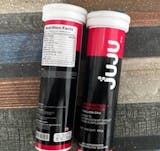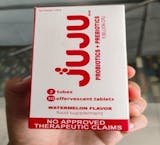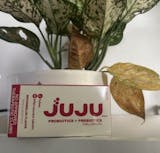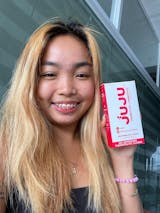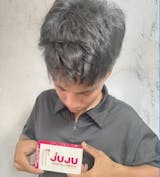In the past few years, peeling lotions have become more popular because they promise to get rid of dead skin cells and leave the skin smooth and glowing. But just like any other beauty products, there are peeling lotion side effects and that is what we are going to discuss here.
One of the biggest worries about peeling lotions is that they might have negative side effects. Even though these products can help get rid of dead skin cells and make your skin brighter and smoother, they can also cause a number of problems. After using a peeling lotion, some people may have redness, itching, or burning. In more severe cases, the skin may blister or become raw, which can be painful and take time to heal.
These side effects can range from mild skin irritation to reactions that are more serious and may need medical help. Before using a peeling lotion, it’s important to know what could go wrong and to carefully follow the directions on the bottle. If you know about the possible side effects of peeling lotion and how to avoid them, you can make a better decision about whether or not to use it.
IN THIS ARTICLE
09. Conclusion
What Is A Peeling Lotion?
Peeling lotion is a beauty product that is meant to remove dead skin cells from the skin. It usually has ingredients like alpha-hydroxy acids (AHAs) or beta-hydroxy acids (BHAs), retinoic acid and salicylic acid that break down the bonds between skin cells, making them easier to shed. Peeling lotions are usually put on the skin and left on for a certain amount of time before being washed off. Some peeling lotions are made for specific parts of the body, like the face or feet, while others are made for larger areas.
People often use peeling lotions to make their skin look better by making it smoother, brighter, and more even in tone. They can also be used to treat skin problems like acne or too much pigmentation. But peeling lotions should be used with care because they can have side effects and may not be right for everyone. Before you use a peeling lotion, you should always talk to a dermatologist. This is especially true if you have sensitive skin or a skin condition.
THE SIDE EFFECTS OF PEELING LOTIONS
Peeling lotions can have both common and rare side effects, depending on the person’s skin type and skins sensitivity, the product used, and how it is applied. Some of the most common things that can go wrong with peeling lotions are:
Redness
After using a peeling lotion, a lot of people get a little redness, which usually goes away in a few hours.
Dryness
Peeling lotions can make your skin dry, which can make it flake or feel tight.
Itching
After using a peeling lotion, some people may feel a slight itch or tingle.
Sensitivity
Peeling lotions can make your skin more sensitive to sunlight, so it’s important to use sunscreen and avoid spending too much time in the sun after using them.
.
In rare cases, peeling lotions can cause more severe side effects, including:
Burns
Chemical burns can happen on the skin if peeling lotions are left on for too long or are used too often.
Allergic reactions
A few people may be allergic to the substances in peeling lotions, which can lead to hives, swelling, or trouble breathing.
Infections
Peeling lotions can make you more likely to get an infection if you don’t clean and protect your skin well after using them.
It’s essential to carefully read and follow the directions for any peeling lotion product, and to stop using it right away if any strange or severe side effects happen. Before you use a peeling lotion, you should talk to a dermatologist about any worries you have about it.
Different Types Of Peeling Lotions
-
Chemical Peels
Chemical exfoliants like alpha-hydroxy acids (AHAs) or beta-hydroxy acids (BHAs) in these peeling lotions make it easier for skin cells to fall off by breaking the bonds between them. Chemical peels come in different strengths, from mild ones that you can use at home to stronger ones that you can only get from a dermatologist.
-
Enzyme Peels
Enzyme peels break down dead skin cells by using natural enzymes like papain (from papaya) or bromelain (from pineapple). Enzyme peels are usually easier on the skin than chemical peels, so they might be a better choice for people with sensitive skin.
-
Physical Exfoliants
Abrasives like sugar, salt, or microbeads are used in physical exfoliants to remove dead skin cells in a physical way. Physical exfoliants can be effective, but they can also be rough on the skin and may not be good for all skin types.
-
Combination Peels
Combination peels may include both chemical and physical exfoliants, as well as other ingredients that are good for the skin, like vitamins and antioxidants. These peeling lotions can help exfoliate and refresh the skin in a more complete way. Examples of this are bleaching creams, whitening soaps and orange peeling lotions.
Benefits of Using Peeling Lotion
Peeling lotions can help the skin in a number of ways, such as:
Exfoliation
Peeling lotions’ main benefit is that they help get rid of dead skin cells, which can make the skin look and feel better. Exfoliating can also help clear out clogged pores and make fine lines and wrinkles look less noticeable.
Brightening
Peeling lotions can help make the skin look brighter by getting rid of dull, dead skin cells and revealing brighter, healthier skin underneath.
Smoothing
Peeling lotions help smooth rough, uneven skin by removing dead skin cells and speeding up the turnover of skin cells.
Treating Skin Concerns
Peeling lotions can help with many skin problems, like acne, hyperpigmentation, and an uneven skin tone.
Enhancing Absorption
Peeling lotions can help other skin care products, like serums and moisturisers, work better by getting rid of dead skin cells.
Stimulating Collagen Production
Peeling lotions can help the skin make more collagen, which can help make the skin more flexible and firm over time.
Overall, peeling lotions can be a helpful part of a skin care routine for people who want to make their skin look and feel better. But it’s important to choose a peeling lotion that’s right for your skin type and to follow the directions carefully to avoid side effects. Before you use a new peeling lotion, it’s always a good idea to talk to a dermatologist, especially if you have sensitive skin or a skin condition.
Patch Testing Before Using Peeling Lotion
A patch test is a diagnostic test that can be used to find out if certain products irritate the skin or cause an allergic reaction. Chemical compounds, additives, perfumes, and cosmetics are just some of the things that can cause a skin reaction.
Before applying any new skin care product, such as peeling lotions, it’s best to do a patch test. A patch test involves putting a small amount of the product on a small, hidden area of skin, like the inside of the forearm or beneath the ear, and waiting for a certain amount of time, usually 24 to 48 hours, to see if there is a bad reaction.
Peeling lotions have active ingredients like alpha-hydroxy acids (AHAs) or beta-hydroxy acids (BHAs) that can exfoliate the skin and may cause irritation or allergic reactions in some people. Because of this, it is important to test the product on a small area of skin before using it on a larger area of skin. This will help prevent any bad reactions.
Follow these steps to do a patch test before you use a peeling lotion:
- Pick a small, unobtrusive spot on your skin, like the inside of your wrist or behind your ear.
- Apply a small amount of the peeling lotion to the area and wait 24–48 hours.
- During this time, don’t wash or touch the area. This will let the product fully soak in and give you a better idea of any reactions.
- If the area gets red, itchy, burns, or shows any other signs of irritation, wash it with cool water and stop using the product.
If you don’t have any bad reactions to the peeling lotion during the patch test, it’s usually safe to use it on a bigger area of skin. But you should still follow the product’s directions and apply it in moderation so you don’t over-exfoliate or hurt your skin.
How To Use Peeling Lotion Correctly?
Here’s how to apply peeling lotion correctly:
- Cleanse your skin: Use a gentle cleanser to get rid of dirt, oil, and makeup. This will make it easier for the peeling lotion to get into the skin.
- Apply peeling lotion: Apply the peeling lotion to your skin by following the directions on the package. It is important to only use the amount that is suggested and to avoid sensitive areas like the eyes, lips, and nose.
- Leave on for the recommended time: Depending on the product, you might need to leave the peeling lotion on your skin for a few minutes or longer. Make sure to carefully follow the directions to avoid irritation or other problems.
- Rinse off thoroughly: After the time you were told to wait has passed, wash your skin well with lukewarm water. Use your hands or a soft cloth to gently wipe off any peeling lotion that is still on your skin.
- Apply moisturizer: After washing off the peeling lotion, pat your skin dry and apply a moisturiser to help calm and hydrate your skin. This will also make any rashes or irritation go away faster.
- Avoid sun exposure: After you use peeling lotion, you should stay out of the sun for a few days. Chemical exfoliants can make your skin more sensitive to the sun, so if you need to go outside, wear sunscreen or sun protection caps, and clothes that can protect you.
Tips For Reducing The Risk Of Side Effects
Peeling lotions can help improve your skin’s texture and appearance, but they can also hurt you if you don’t use them right. Here are some tips to help you use peeling lotion with less risk of side effects:
- Carefully follow the directions: Always carefully read and follow the directions on the package. Use the right amount of the product and stay away from sensitive spots like the eyes, lips, and nose.
- Start slowly. If you’ve never used chemical exfoliants before, start with a peeling lotion with a low concentration and work your way up to lotions with higher concentrations. This will give your skin time to get used to the change and lower the chance of side effects.
- Don’t use it too much: Don’t use peeling lotion more than the directions say. If you use it too much, it can dry out your skin or cause other problems.
- Don’t mix with other exfoliants. Using more than one exfoliant at once can increase the chance of side effects. While you’re using peeling lotion, don’t use scrubs or other products that remove dead skin.
- Moisturize: After using peeling lotion, it’s important to use a moisturiser to help calm and hydrate your skin. This can help make any redness or irritation go away.
- Protect your skin from the sun. Chemical exfoliants can make your skin more sensitive to the sun, so if you have to go outside, make sure to wear sunscreen or other protective clothing.
Remember that if you have serious or long-lasting side effects, you should stop using the product and see a dermatologist.
Frequently Asked Questions
Is peeling lotion safe to use?
Peeling lotions can be safe to use when used as directed. However, they can also have side effects such as skin irritation, redness, and flaking. In some cases, overuse or improper application can lead to more serious side effects, including chemical burns and scarring.
How often should I use peeling lotion?
The frequency of use depends on the type and strength of the peeling lotion. It is important to read the product label and follow the directions carefully. Generally, it is recommended to start with once or twice a week and then gradually increase the frequency if your skin can tolerate it.
What should I do if I experience a severe reaction to peeling lotion?
If you experience a severe reaction to peeling lotion, such as intense burning, blistering, or swelling, you should immediately stop using the product and seek medical attention.
Can I use peeling lotion with other skincare products?
It is generally safe to use peeling lotion with other skincare products, but it is important to avoid using products that contain similar active ingredients, as this can increase the risk of skin irritation. It is also important to follow a consistent skincare routine and to avoid over-exfoliating the skin.
How long do peeling lotion side effects last?
The duration of peeling lotion side effects can vary depending on the severity of the reaction and the individual’s skin type. Mild side effects typically resolve within a few days, while more severe side effects may take longer to heal.
Conclusion
Peeling lotions are a great way to keep your skin from getting older and fix early signs of skin damage. Having said that, they’re not for everyone. If you’re thinking about buying a peeling lotion, make sure to do your homework first. But it’s important to know that peeling lotions can also cause irritation, redness, and flaking of the skin. Chemical burns and scarring can be more serious side effects that can happen if you use too much or don’t use it right. Only try products that have been shown to be safe with few side effects. And before making any changes to your skin care routine, you should always talk to a dermatologist. Therefore, it is essential to use peeling lotions as directed and to be aware of the potential peeling lotion side effects.



